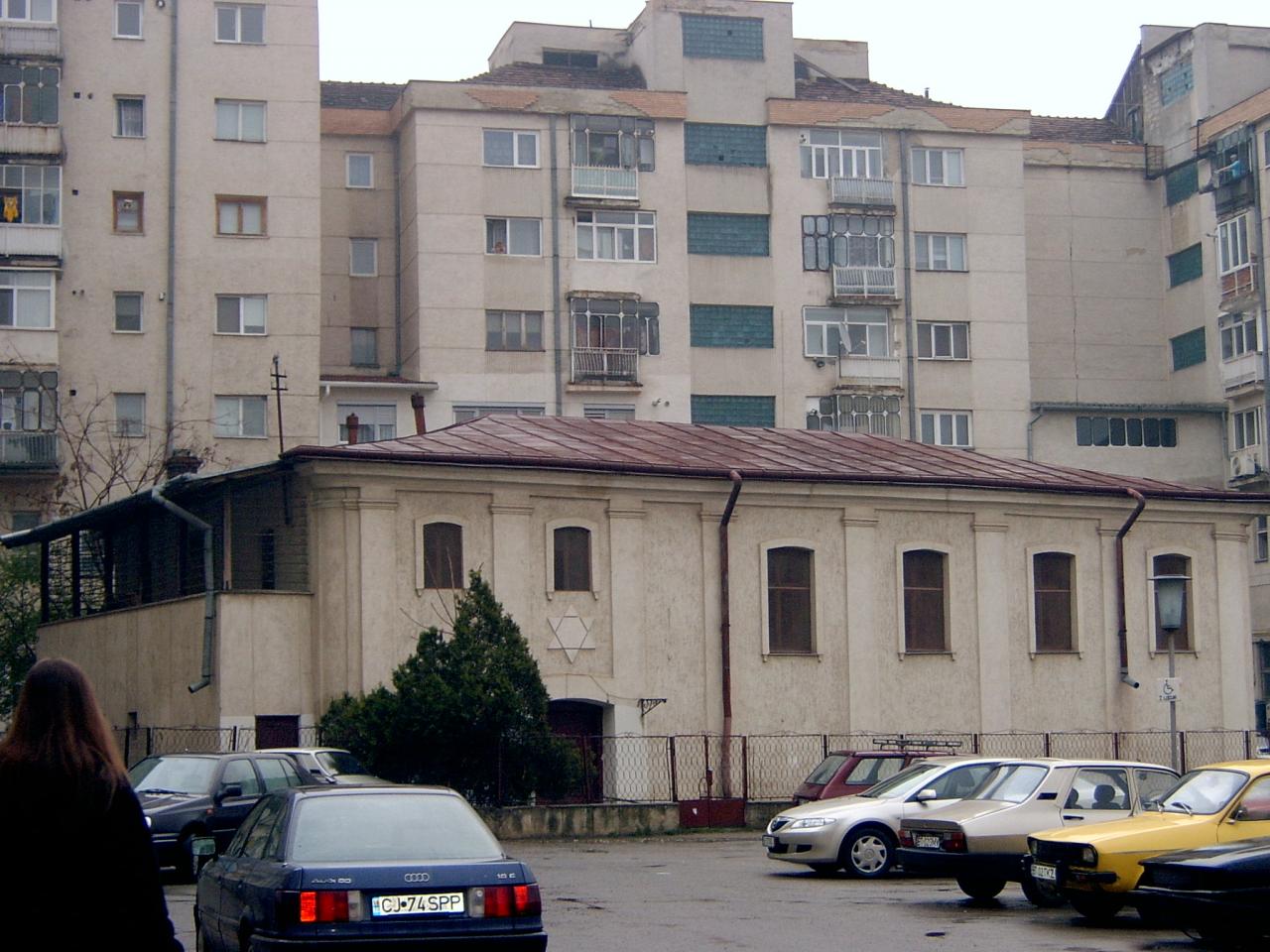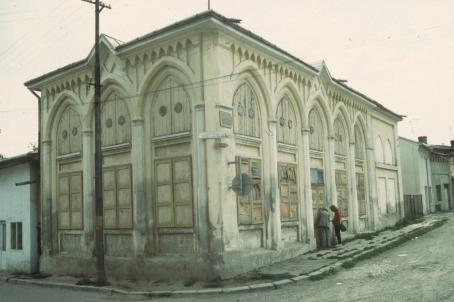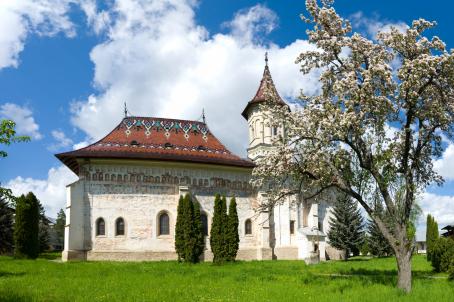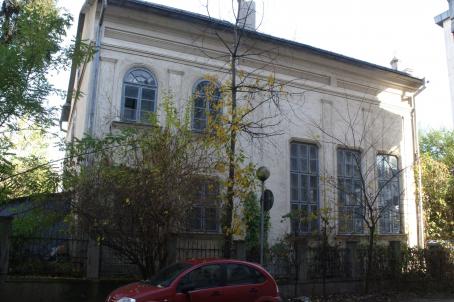Great Synagogue, Botoşani
The Great Synagogue (Hoykhe Shul) was erected in 1834. The synagogue consists of an elongated building decorated with pilasters. Twelve windows, set at the level of the upper floor, illuminate the rectangular main prayer hall. The synagogue includes three spaces with wall and ceiling paintings: the main prayer hall, the women’s gallery, and the heated small prayer hall.
About this building
N/A






